
USS Waukesha (AKA-84) was a Tolland-class attack cargo ship in service with the United States Navy from 1945 to 1946. She was sold into commercial service and was scrapped in 1970.

USS Lanier (APA-125) was a Haskell-class attack transport in service with the United States Navy from 1944 to 1946. She was scrapped in 1973.

USS Arenac (APA-128) was a Haskell-class attack transport in service with the United States Navy from 1945 to 1946. She was scrapped in 1974.
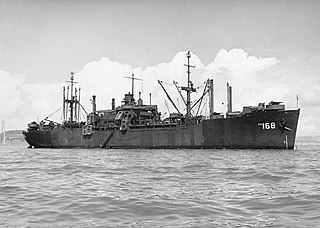
USS Gage (APA-168) was a Haskell-class attack transport in service with the United States Navy from 1944 to 1947. Gage was the sole remaining example of the 117-ship Haskell-class and was scrapped in 2009.

USS Missoula (APA-211) was a Haskell-class attack transport in service with the United States Navy from 1944 to 1946. She was scrapped in 1975.
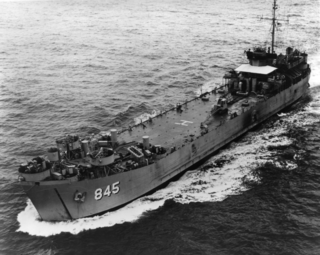
USS Jefferson County (LST-845) was an LST-542-class tank landing ship built for the United States Navy during World War II. Named after counties in 25 states, she was the only U.S. Naval vessel to bear the name.

USS Braxton (APA-138) was a Haskell-class attack transport in service with the United States Navy from 1944 to 1946. She was scrapped in 1973.
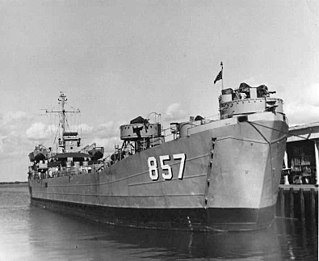
USS King County (LST-857) was an LST-542-class tank landing ship built for the United States Navy during World War II. Named after counties in Texas and Washington, she was the only U.S. Naval vessel to bear the name.
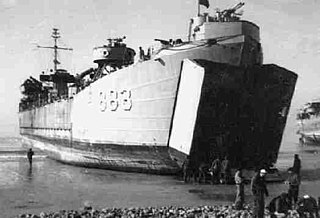
USS La Moure County (LST-883) was an LST-542-class tank landing ship built for the United States Navy during World War II. Named after LaMoure County, North Dakota, she was the first of two U.S. naval vessels to bear the name.
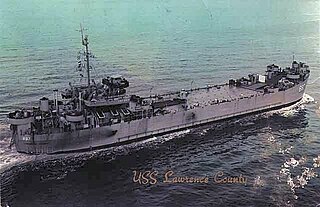
USS Lawrence County (LST-887) was a LST-542-class tank landing ship built for the United States Navy during World War II. Named after counties in eleven U.S. states, she was the only U.S. Naval vessel to bear the name.

USS Lander (APA/LPA-178) was a Haskell-class attack transport in service with the United States Navy from 1944 to 1946. She was sold for scrapping in 1983.

USS Megrez (AK-126) was a Crater-class cargo ship commissioned by the US Navy for service in World War II. Megrez was named after Megrez, a star in the constellation Ursa Major. She was responsible for delivering troops, goods and equipment to locations in the Asiatic-Pacific Theater.

USS Lamar (APA-47) was a Bayfield-class attack transport in service with the United States Navy from 1943 to 1946. She was sold into commercial service in 1948 and was scrapped in 1971.

USS Buckingham (APA-141) was a Haskell-class attack transport in service with the United States Navy from 1945 to 1946. She was scrapped in 1974.
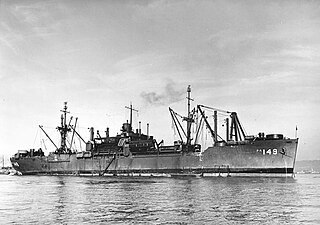
USS Audubon (APA-149) was a Haskell-class attack transport in service with the United States Navy from 1944 to 1946. She was scrapped in 1973.

USS Lauderdale (APA-179/LPA-179) was a Haskell-class attack transport acquired by the U.S. Navy during World War II for the task of transporting troops to and from combat areas.
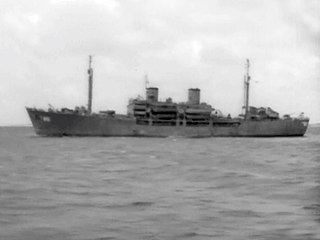
USS Gasconade (APA-85) was a Gilliam-class attack transport that served with the United States Navy from 1944 to 1946. She was sunk as a target in 1948.

USS Tazewell (APA/LPA-209) was a Haskell-class attack transport in service with the United States Navy from 1944 to 1946. She was scrapped in 1973.

USS San Saba (APA-232) was a Haskell-class attack transport which served with the US Navy in World War II. Commissioned in December 1944, she arrived just too late to see action, and spent the last weeks of the war on transport missions.

USS George Clymer (APA-27) was an Arthur Middleton-class attack transport that saw service with the US Navy in four wars - World War II, the Chinese Civil War, the Korean War and the Vietnam War. It was named after United States Founding Father George Clymer.




















